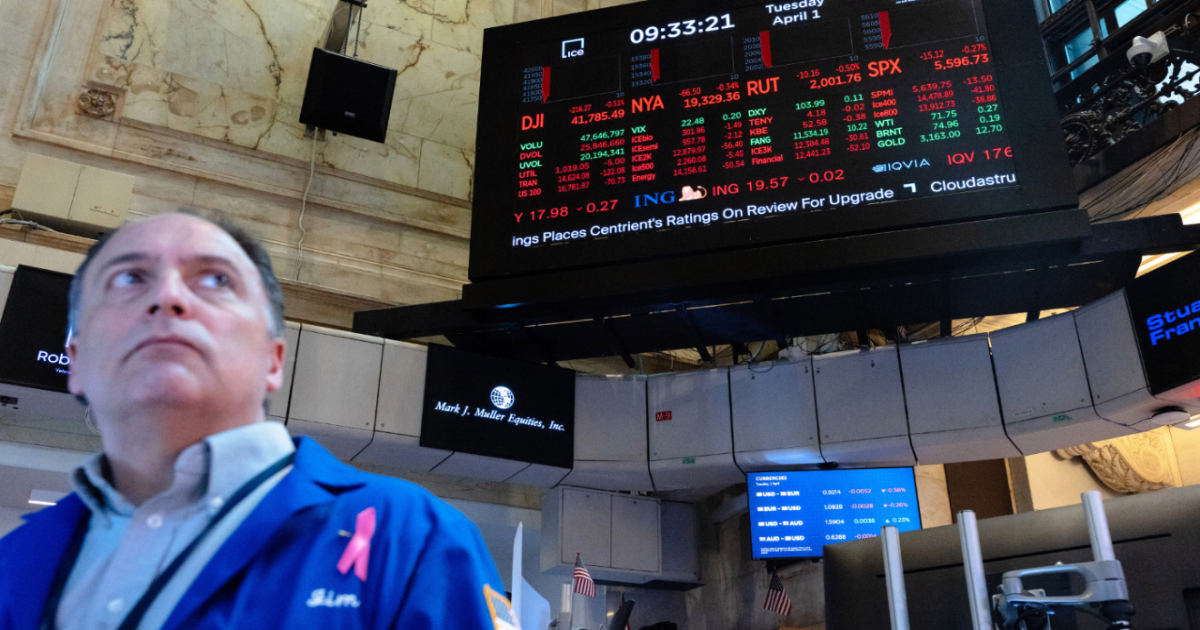Move over, Smoot and Hawley. President Trump has anointed himself America’s greatest protectionist, and he’s launching a global trade war to prove it.
On Wednesday, Trump slapped a minimum 10 percent tariff on all imports, plus additional “reciprocal” tariffs on 60 other countries that have the temerity to sell us things we want to buy. He dubbed it “Liberation Day” to mark the freeing of Americans from the supposedly oppressive burden of trading with others.
Steeped in nostalgia for America’s industrial heyday, Trump imagines he can unilaterally restructure the world’s economy. The president can sign all the executive orders he pleases, but he can’t throw history into reverse or repeal basic economics.
His universal tariffs constitute a massive tax hike on U.S. consumers, hitting everything from European medicines and Mexican fruits and vegetables to Vietnamese shoes and German cars. Likewise for Japanese or Korean steel and Canadian aluminum and electricity.
Meanwhile, our $3 trillion export sector — satellites and medical devices, soybeans and wine, movies and telemedicine — will shrink as other countries inevitably retaliate by hiking their tariffs.
Unless Trump relents, choking off trade with high tariffs will send prices soaring again, slow down economic growth, make Americans poorer and embroil us in mutually ruinous global trade wars with friends and allies.
The last time that happened, a wave of protectionism across the United States and Europe intensified and prolonged the economic crisis of the 1920s and 1930s, destabilizing liberal democracies and paving the road to dictatorship and a cataclysmic world war. Why risk a relapse now into economic isolationism?
Trump offers three logic-defying explanations. First, he parrots the populist left in blaming trade agreements for the decline of U.S. manufacturing jobs. Jacking up the price of imported goods, he assures us, will seed a new industrial boom at home.
Americans, however, aren’t buying MAGAnomics. Consumer confidence has plummeted to a 12-year low, with families cutting back on spending in anticipation of a return to high living costs.
Investors are rattled too. By mid-March, the stock market had lost more than $3 trillion since Trump took office — the equivalent of 10 percent of America’s $30 trillion GDP.
In a recent YouGov poll, 61 percent of voters said tariffs hurt average working people, while just 14 percent said they would help.
Trump touts tariffs as a magic elixir for growth, but their real purpose is to protect companies from foreign competition. Sometimes that’s necessary for strategic reasons, to ensure access to vital goods during wars or other emergencies. Targeted and temporary tariffs can give struggling firms breathing room to adapt to changing market conditions.
Over time, however, a general policy of high tariffs invariably leads to economic scarcity and stagnation.
Second, Trump thinks trade deficits are proof that other countries are ripping us off.
“For decades, our country has been looted, pillaged, raped and plundered by nations near and far, both friend and foe alike,” he declared.
This eruption of paranoid nonsense shows Trump has no idea of how trade works. Comparative advantage makes trade a win-win proposition, which is why all countries, even hermetic North Korea, engage in it. Nor does the president understand how America’s low savings rate and borrowing make our trade deficits larger.
Third, he hypes tariffs as a major new revenue stream for funding the federal government. White House aide Peter Navarro estimates tariffs will generate $600 billion a year, but Washington spends nearly $7 trillion a year. And if tariffs work as advertised, the revenue they generate will shrink as consumers avoid high-priced imports.
Trump’s tariffs are a quack remedy for a real socioeconomic problem: The disappearance of manufacturing jobs with good pay and benefits since the 1970s has hit working families hard, even as the country as a whole has prospered.
That inequity has meant downward mobility and eroding social status as non-college workers struggle to find jobs that pay middle-class wages. Once thriving blue-collar communities feel abandoned by society and drawn to right-wing populism as they contend with shriveled economic prospects, family instability and drug addiction.
The president apparently sees tariffs as a form of reparations for working Americans. But the culprit isn’t trade or globalization or “neoliberalism.” It’s the emergence of a post-industrial economy shaped mainly by technological change, rising education levels and growing demand for services.
Factory employment has declined in all advanced countries, even manufacturing powerhouses like Germany and Japan. But thanks to tech-driven productivity gains, U.S. manufacturing output has increased by more than 60 percent since 1999, even as our factory workforce has contracted by about 25 percent.
The U.S., like most other high-income countries, has evolved into a predominantly service-based economy. Services account for 80 percent of non-farm jobs. Even if more factories sprout up here, job gains are likely to be modest due to automation.
In fact, since Trump’s first set of tariffs, manufacturing employment has stagnated, up by only 30,000 since 2018, compared to 400,000 in the second Obama term.
And with over half a million manufacturing jobs open over the last five years, blue-collar workers themselves appear ambivalent about factory careers.
A 2023 YouGov poll commissioned by the Progressive Policy Institute asked non-college workers where they think their children will find the best jobs and careers. Most (44 percent) choose the communications and digital economy, while just 13 percent picked manufacturing.
Yet Trump is threatening to tank the U.S. economy and poison relations with our trading partners to roll back five decades of post-industrial evolution. It’s a mad quest, and working Americans will pay dearly for it.
Will Marshall is the founder and president of the Progressive Policy Institute.
